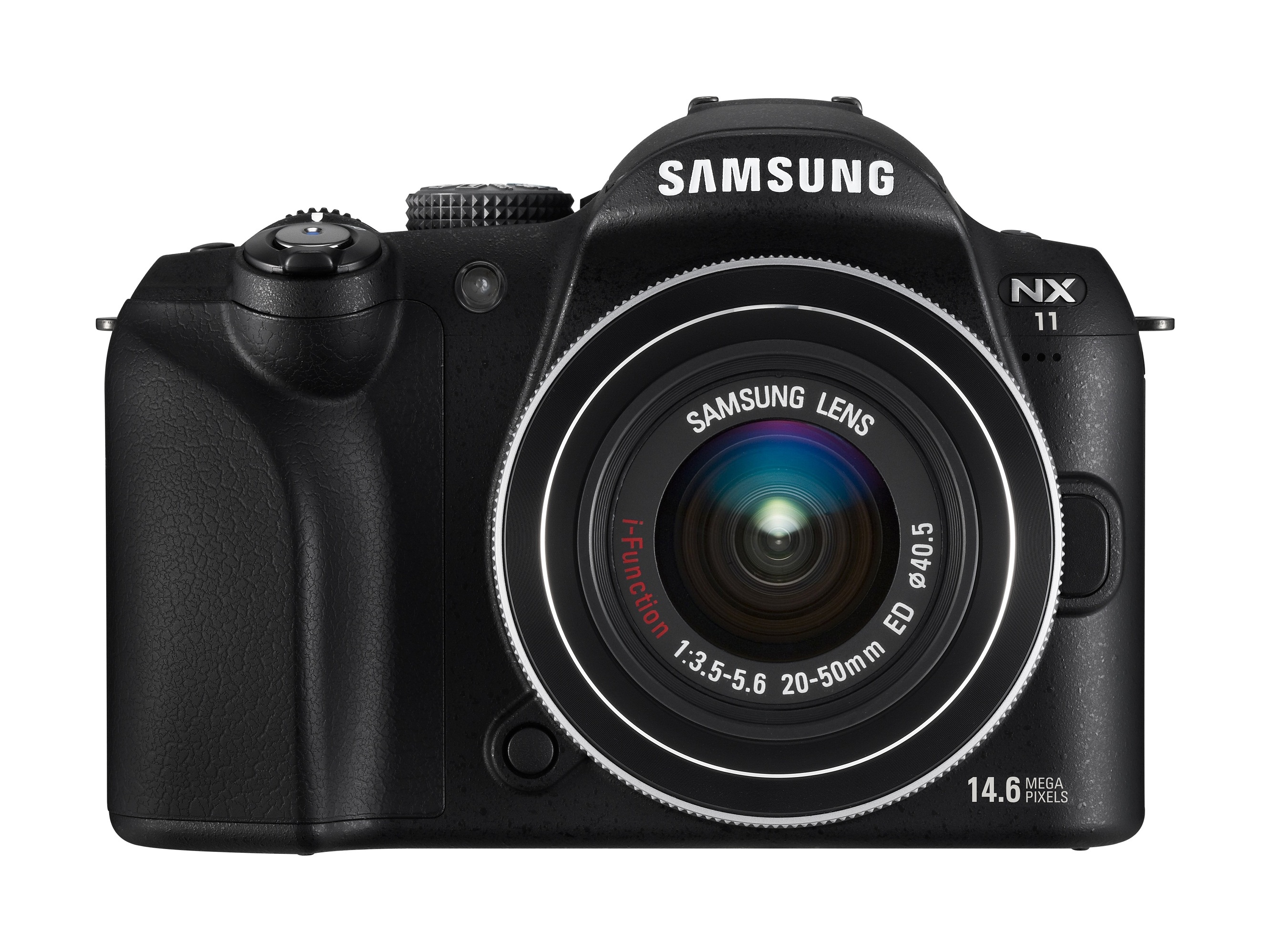Why you can trust TechRadar
The NX11 requires less than half a second to power up, and it's ready to shoot at once. The 18-55mm kit lens and the 20mm f/2.8 objective share an impressively swift autofocus performance, although, unusually, it's the kit lens which is the quieter of the two.
As with similar mirrorless models the NX11's autofocusing performance is still no match for the phase-detection systems of DSLRs, but when set to its multi-pattern focusing option the camera does remarkably well to quickly pick out and mark the key subject, even if they occupy only a fraction of the frame.
Manual focusing with the above optics is also a breeze thanks to the responsiveness of the focusing ring, in contrast to some of the more tardy performances on comparable camera/lens combinations.
The camera also helpfully magnifies the central part of the frame once the manual focusing ring is adjusted, although not by the same amount as on other cameras; this is particularly a shame considering the mixed performance of the LCD screen, which make judging fine focus adjustments a little tricky.
You can still manually focus with confidence, though, by setting the camera to show the Focus Aid bar instead of the magnification option. This indicates when the camera is close to perfect focus by rising as contrast increases.
It's easy to find nice touches elsewhere, too, such as the depth-of-field preview button to the side of the lens mount, and the zoom function upon image playback which stops at the image's full size rather than continue on to higher and higher levels of pixelation.
The camera's metering system scores well for accuracy, with just an ocassional tendency to underexpose when faced with large areas of sky, other brighter details. This leaves the highlight-retaining Smart Range option largely uneccessary, although, as promised, it does tame highlights a touch where it is used, even if it can ocassionally cause a slight shift in white balance.
Otherwise, the auto white balance system can also be left largely to its own devices, as it generally retains the correct mood of the scene. The only times it seems to record any inaccuracies come when the same scene is being shot from different perspectives, although this is common to many other cameras too.
A slight texture is present from around ISO 200 onwards, but it's only from around ISO 800 that coloured noise begins to noticeably degrade image quality.
Even with noise reduction disabled, the camera appears to apply noise reduction to JPEGs shot at the highest couple of sensitivities, and this is accompanied by an unfortunate shift in saturation which leaves images looking a little dull and lacking any punch.
Colour otherwise is generally fine, and JPEGs show good saturation and contrast next to raw files, although a handful of images do show an odd saturation in particular hues. Sharpeness is also noticeably increased JPEGs, while some of the more obvious chromatic aberrations are visibly reduced too.
Once the kit lens is stopped down a little sharpness is very good in the centre of the frame, and this continues towards edges and corners.
There's pronounced and slightly uneven barrel distortion at the widest extreme of the 18-55mm kit lens, although most of this can be easily and effectively removed by the camera's Distortion Correction function.
Video quality is pretty average, with decent detail and the camera's reliable metering system producing pleasing exposure, but colour moire patterning is very obvious throughout a number of videos. Sound quality is good, though, not stellar by any means but no worse than can be expected for such a model.
